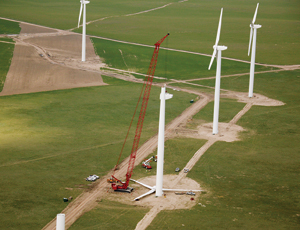Also part of the new stimulus plan are hundreds of billions of dollars in proposed tax cuts aimed at stanching job losses and prompting businesses and municipalities to make growth-producing investments. Industry officials welcome them, but some are not convinced they will have the economic impact legislators and the Obama administration envision.

“This recovery package will provide tremendous tax relief...while also giving businesses the boost they need to create new jobs,” said Charles B. Rangel (D-N.Y.), chairman of of the House Ways and Means Committee, in announcing the Jan. 15 incentives. Aside from income tax credits and those related to higher education and housing, the proposal offers a slew of business incentives from eased tax bites for operating losses and exemptions for investing in distressed areas to energy conservation tax credits and repeal of limits on private activity bonds.

275 Billion
Incentives could help homebuilders and encourage capital purchases, but some say it’s not enough.
“It’s hard to assess how quickly these provisions will be implemented, but they will make more firms able to weather a downturn,” says Ken Simonson, chief economist of the Associated General Contractors. “Neither the tax nor spending provisions are guaranteed, but they’re definitely going to offset some decline.”
Others point to new language that would al-low many firms to “carry back” the financial impact of current operating losses as far as five years, obtaining refunds for taxes paid when profits and revenue were larger.
Michael Lucki, a Los Angeles-based partner at Ernst & Young, sees the provision as a boon to struggling homebuilders. “This is a great way for them to raise cash for operations from the federal government,” he says. That benefit would not be available to banks and other businesses that already received federal bailout money, but it could give some industry firms “a chance to wipe out tax liability from previous years,” says Richard Schrader, chief financial officer at Parsons Brinckerhoff, New York City.
But Shrader is disappointed that a provision to offer businesses a $3,000 tax credit for each new hire was promoted by the Obama administration but is not in the House stimulus bill. “Effectively, you would have had a mild incentive to make that hiring decision,” he says. “It’s not profound, but it might be a tipping point for some businesses.”
Despite the Obama energy push, some in that sector still think more financial incentives are necessary. “The wind-energy sector is facing a number of very serious challenges in the near term,” says Tom Gunkel, president of Minneapolis-based Mortenson Construction Co., a major builder of wind-energy projects. “The wind industry needs very focused and immediate help from the stimulus plan in order to simply sustain, much less grow the industry as a whole.” He says until the current economic crisis settles and U.S. firms can generate enough profit to take advantage of current energy production tax credits, the industry “needs a near-term solution that monetizes PTCs in a different fashion.”
John F. Hennessy, chairman of the American Council of Engineering Companies, thinks tax breaks may be of more benefit to large firms able to better use them. “Most small E&C firms will not keep people on the payroll because of tax benefits; they will keep them on staff if they have work,” he says. But Hennessy sees benefit in provisions deferring the 3% withholding tax on federal contractors and on equipment depreciation incentives that could encourage firms to accelerate purchase of computer hardware and software and capital goods.





Post a comment to this article
Report Abusive Comment